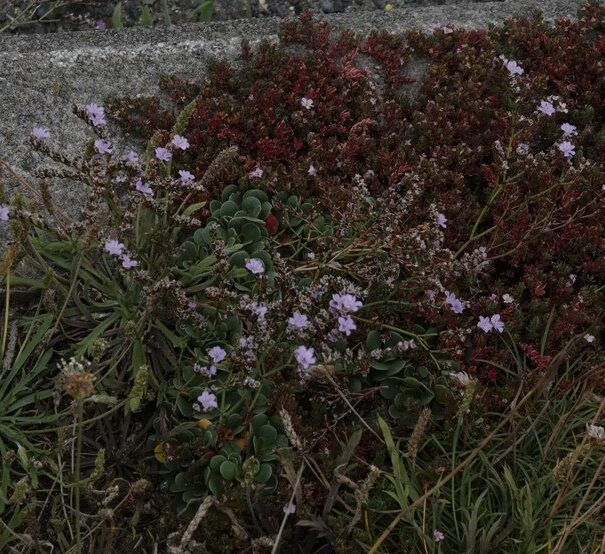Seaford Verges – can we go wild?
Who owns the verges? ESCC are responsible for cutting the verges. A verge normally adjoins the highway (and possibly the pavement).
Roadside verges are the responsibility of ESCC and residents should not mow or manage the verges themselves.
See more information on our main Verges page
On the Verge are working to educate and inspire the wider public as to why it is so important to improve biodiversity in verges, green spaces and gardens, rather than keeping verges “tidy” with a monoculture of only grass. Wildlife urgently needs these “corridors” of habitat so that it can flourish.
Some verges in Seaford are already being managed differently and we would like to see more verges managed for wildlife. For example some of the verges in Edinburgh Road have particularly important species and are therefore desginated as wildlife verges. Other verges are designated as meadow verges.
Find out more below about how to get your verge designated and bring more wildlife corridors to Seaford.
Designating special verges
East Sussex Highways are the body that decides if verges should be designated. You can find out more here
Within East Sussex there are 176 locations which are designated verges managed for the special wildlife they support. This helps to comply with the legal duties to conserve and enhance biodiversity, as set out in the 2006 Natural Environment and Rural Communities Act.
Roadside verges can provide a home for many important species of wildflowers, insects and other animals. Both rural and urban verges can often be the last areas of declining habitats, such as woodland edges, ditches, meadows and downland, and provide important wildlife corridors, as well as being a haven for pollinators such as bees.
One ESCC verge contains 68% of the UK population of Spiked Rampion, protected under Schedule 8 of the 1981 Wildlife and Countryside Act.
There are two types of designated verge in East Sussex. Wildlife Verges and Meadow Verges.
Wildlife Verges
Wildlife verges are those that have particularly special species that should be protected.
In order to apply for a designation as wildlife verge, you need to carry out an in-depth survey of the verge and listing all species present and complete an application. The application window is 1st of June to the 31st of August as this is the best time frame to identify flowering species. There are guidelines to help you complete the survey safely.
Please get in touch with On the Verge or Seaford Natural History Society if you need help with the survey or application form, as we may be able to help you, and provide volunteers or advice.
Wildlife verges are selected using specific designation criteria to ensure that the correct management is carried out for the species present and that money is spent on special verge management only where it is most appropriate.
An application form must be submitted by the proposer with accompanying maps and photos, and other supporting information as appropriate.
If the evidence provided suggests that the verge will meet the selection criteria, the site will be reviewed, and assessed by the County Ecologist over the Winter.
A decision is then reached on whether the site is designated a Wildlife, Meadow or remains a standard (rural/urban) verge and confirmation of the decision is sent to the proposer and Town/Parish Council.
Find the application form and more guidance here
Meadow Verges
Some verges may not be species rich (yet) but if you would like to see local verges to develop with meadow flowers, you can apply for a verge to become a meadow verge. This will only be cut once, later in the autumn when all grasses and flowers present have normally flowered and set seed. The cuttings from Meadow Verges, will not be collected. Find out more information here
Can you plant flowers in verges?
The Highways agency do not have the resource to plant or seed all the verges but do work closely with volunteer groups to allow them to seed and plant flowers in some of the verges.
However, planting or seeding non-native species can have the opposite effect than intended in designating a wildlife or meadow verge, by overwhelming native species and not allowing them to grow.
Verges do not have to have flowers to provide benefits. Simply reducing mowing can have enormous benefits for wildlife. Long grass alone can provide habitat which supports insects which in turn benefit other animals and birds. Many butterflies lay their eggs on grasses for example.
If you are interested in planting into verges, please contact a community group (like On the Verge) who can help you get consent from the relevant authorities, and carry out the work safely.
Love your verge!
Even if you do not want to apply for designation for your verge, we would encourage you to love your verge and pay it attention as the seasons pass by! Watch what wild flowers appear, and look for insects too! You can share your sightings on the Renaturing Seaford webpage or social media channels. Keeping a list and taking photos will help you if you later want to apply for designation as above. On the Verge may also be able to use this data as part of a new Seaford wide mapping project.











